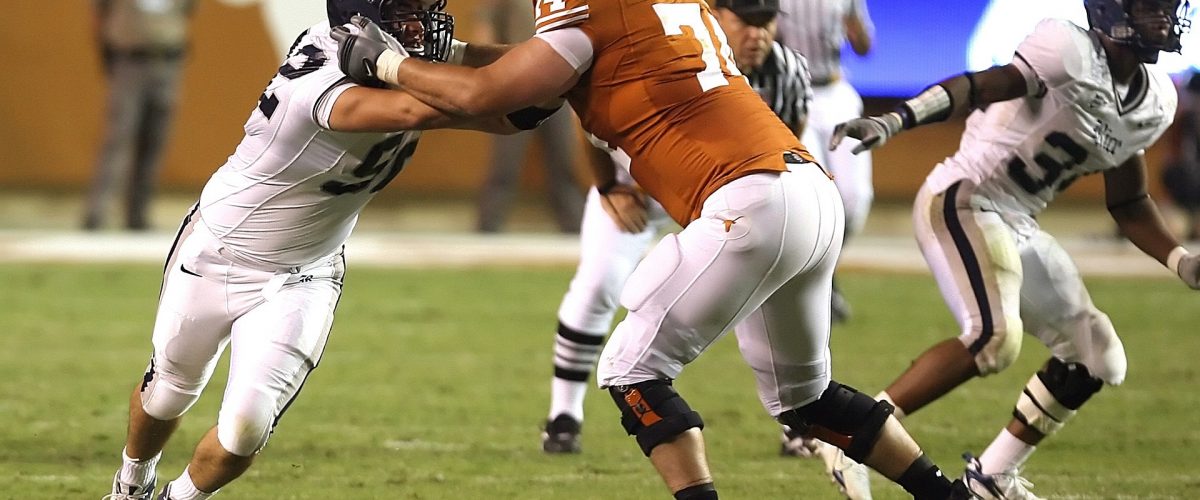
Woody Eckard has always held a certain fascination with college athletics. As an economics professor at the Business School, Dr. Eckard has conducted several studies on the NCAA throughout his career, the first being published in 1998. He enjoys sports and has always wanted to examine the economics of college sports to help solve the issues the athletes, teams, and leagues are facing. He recently published two studies related to the NCAA’s operations. The first considered the athlete graduation rate and whether it was accurate to what the NCAA (National Collegiate Athletic Association) promotes. The second one examined the competitive balance between the NFL and NCAA power conferences to test the NCAA’s claim that they have an excellent competitive balance.

Examining Graduation Rates
Woody decided to test graduation rates within the NCAA to see if what they project is accurate to what the reality is. He did so by looking at the rates at which athletes graduated and compared this to what the NCAA advertised as their rate. He found that the NCAA overestimates the “true” rate by sometimes over 20%. They promote their rate as accurate, but in reality, it is not the case. This raises the question of how they should more accurately portray their numbers and how they should correct them. Education is supposed to be an integral part of the college athlete experience, and the NCAA needs to address this discrepancy.
Competitive Balance and Pay
For his second study, Woody compared the competitive balance between the NFL and the NCAA Power Five conferences, which include the big-name football schools. A competitive balance means that all teams have a more equal chance of winning, rather than just few that are consistently at the top. The NCAA promotes their amateur model with a basic scholarship argument. They say that the scholarships rather than having the students paid as professionals for their sports involvement support a better competitive balance. Woody was curious whether this was true, so he tested whether there was indeed such a balance through statistical analysis. He looked at the records of Power Five conference football schools, of which there are over 60, and the NFL teams of which there are 32. Woody examined data of the last 20 years by looking at winning balances, percentages of wins over time, and rankings. He found that there is more variety at the top for the NFL than the NCAA. This means that they don’t really have the competitive balance that they boast.
The Future of the NCAA
With both the studies Woody published, there are significant implications for the NCAA. There is a large push towards presenting accurate data. In addition, there is a movement that wants to end the amateur model, which he proved does not promote competitive balance. Rather, many are advocating for the professional model. This would let players share in revenues that can be very large at Power Five schools for football and men’s basketball. California recently passed a law called the “Fair Pay to Play Law” requiring colleges in California to pay players for using their name, image, or likeness in endorsement deals and branding. This would give players more rights, more financial reward, and recognition.
With COVID-19, there are also big implications for the NCAA, and Woody weighed in on these. While the NCAA does not schedule the Power Five conferences, it is being affected. “There may not even be a fall football season,” said Woody. Two of the conferences have agreed to play only in-conference games. Three minor leagues have already dropped fall football. There is a lot of concern about player health, as football is a contact sport. However, colleges are concerned about revenue losses. Also, many of the players are trying to go pro, and are advocating to still have a season. “It’s a tough situation,” said Woody. Time will only tell how things will unfold and approaches are still being figured out.
Implications of these Findings
With the push by the public to correct these problems, such as switching to a professional model and ensuring educational standards, there are many potential opportunities for the NCAA. While CU Denver doesn’t have intercollegiate athletics, these issues affect collegiate sports fans around the country. There is also an opportunity for Business School students to study similar issues and get involved. Woody was passionate about this industry, what are you passionate about? Business opens up the ability to study these things.


